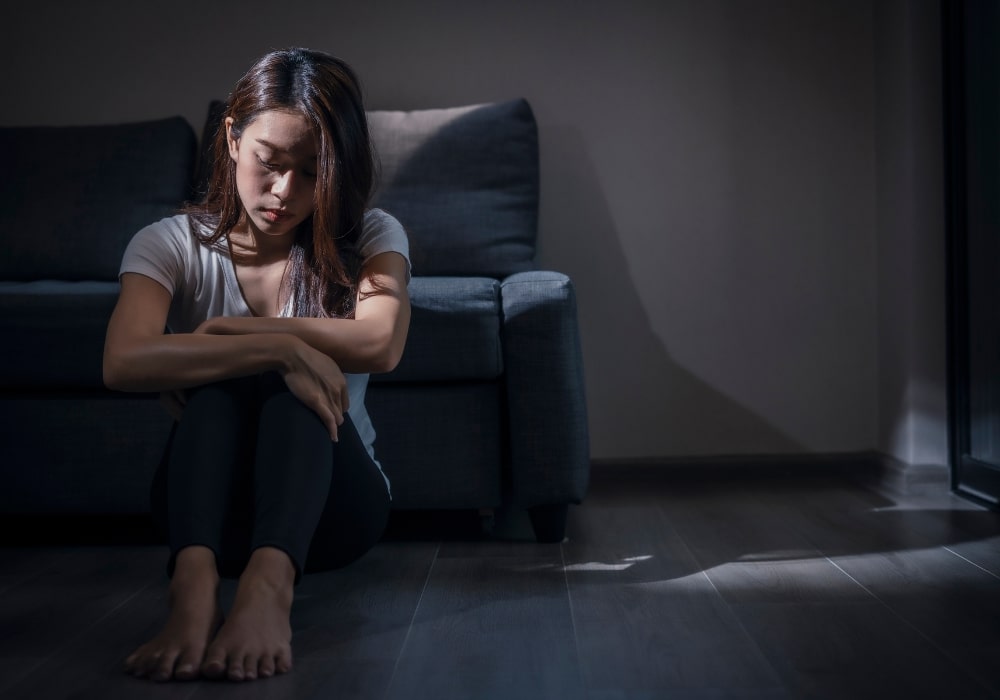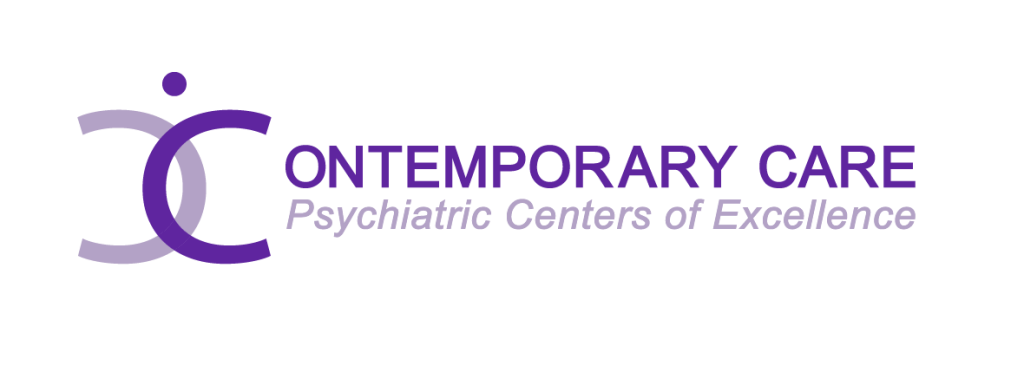Seasonal Affective Disorder (SAD) is often associated with winter blues—dark days, cold weather, and a longing for sunshine. But can you have reverse seasonal depression in the summer? It might sound counterintuitive, but reverse SAD is a real and challenging condition that can leave people feeling down when everyone else seems to be soaking up the sun and enjoying the warmth. In this post, we’ll explore what reverse seasonal depression is, its symptoms, causes, and treatments, and provide some tips on how to manage this unique form of depression.
What is Reverse Seasonal Depression?
Most people are familiar with SAD as a condition that strikes during the fall and winter months. However, reverse seasonal depression, also known as summer SAD, is a lesser-known variant of the disorder that occurs during the summer months instead.
The Basics of Seasonal Affective Disorder (SAD)
Seasonal Affective Disorder is a type of depression that follows a seasonal pattern, usually starting in late fall and continuing through winter. It’s linked to reduced exposure to sunlight, affecting your body’s internal clock and hormone levels. People with SAD often experience low energy, changes in sleep patterns, and a general sense of sadness.
What Makes Reverse Seasonal Depression Different?
Unlike traditional SAD, which is triggered by a lack of sunlight, reverse seasonal depression is thought to be brought on by too much sunlight and rising temperatures. It’s the opposite of what many people experience, making it more difficult to recognize and diagnose.
Symptoms of Reverse Seasonal Depression in the Summer
Reverse seasonal depression can manifest in unique and challenging ways, especially during the summer months. While most people associate seasonal depression with the dark and cold of winter, those who experience the reverse can find the heat and prolonged daylight overwhelming. Below are some of the key symptoms of reverse seasonal depression and how they can impact daily life.
Overwhelming Anxiety and Restlessness
One of the most noticeable signs of reverse seasonal depression is heightened anxiety. For those affected, the extended daylight hours and constant heat can feel suffocating, leading to a persistent sense of restlessness. Rather than feeling energized by the sun, individuals with reverse seasonal depression may experience an increase in anxious thoughts, an inability to relax, and a constant urge to move or escape the overwhelming environment.
Key Indicators:
- Persistent feelings of anxiety, especially during the day.
- Difficulty sitting still or relaxing.
- Constant urge to move, pace, or change surroundings.
- Trouble focusing due to racing thoughts.
Irritability and Mood Swings
Another common symptom of reverse seasonal depression is mood instability. You might become unusually irritated by minor inconveniences or snapping at those around you more than usual. Excessive sunlight and high temperatures can wear on your patience, leading to quick and unexpected mood swings. These fluctuations in mood are a hallmark of reverse seasonal depression, making the summer months particularly challenging.
Signs of Irritability and Mood Swings:
- Increased frustration over small issues.
- Frequent arguments or conflicts with others.
- Sudden shifts from feeling content to feeling agitated or upset.
- Difficulty managing emotions or remaining calm.
Difficulty Sleeping and Fatigue
Despite the longer days, reverse seasonal depression often brings with it significant sleep disturbances. People experiencing this condition frequently struggle with insomnia or find it difficult to maintain a consistent sleep schedule. The extended daylight hours can disrupt your body’s internal clock, leading to trouble falling asleep, staying asleep, or waking up too early. Even when you get some rest, the sleep might not be restorative, resulting in daytime fatigue. This constant tiredness can exacerbate feelings of depression and make the symptoms of reverse seasonal depression even more intense.
Common Sleep and Fatigue Issues:
- Difficulty falling asleep or staying asleep.
- Waking up too early despite feeling tired.
- Feeling groggy or unrefreshed even after a full night’s sleep.
- Experiencing daytime drowsiness or exhaustion.
Can You Have Reverse Seasonal Depression? Exploring the Possibilities
While most discussions around Seasonal Affective Disorder (SAD) focus on winter depression, the idea of experiencing depression during the summer months might seem unusual. However, reverse seasonal depression—a type of SAD that occurs in the warmer, sunnier months—is a genuine condition. You might wonder, “Can you have reverse seasonal depression?” The answer is yes, and it’s important to recognize that this form of depression affects many people who struggle when the seasons change, just in a different way than most.
How Common is Reverse Seasonal Depression?
When considering reverse seasonal depression, it’s crucial to understand how widespread the condition is. Research suggests that while winter SAD is more common, approximately 10% of individuals diagnosed with SAD experience it during the summer months instead of winter. Although it’s less prevalent, for those who are affected, reverse seasonal depression can be just as disruptive and difficult to manage as its winter counterpart. The warmer weather, longer days, and increased social pressures associated with summer can be overwhelming for those with this condition.
Who is Most Affected by Reverse Seasonal Depression?
Now that we know reverse seasonal depression is real, the next question is, “Who is most likely to experience it?” The answer varies, but certain factors make some people more vulnerable to this condition. While anyone can develop reverse seasonal depression, specific groups tend to be more at risk due to biological, psychological, and environmental factors.
Age, Gender, and Geographic Factors
Several key factors influence the likelihood of experiencing reverse seasonal depression:
- Age: Younger adults are more likely to suffer from reverse seasonal depression than older individuals. The pressures of maintaining social interactions, coupled with the demands of modern life, can contribute to increased stress during summer.
- Gender: Women are more frequently diagnosed with reverse seasonal depression than men, similar to winter SAD. Hormonal differences and societal expectations may play a role in this gender disparity.
- Geographic Location: Where you live can also impact your chances of experiencing reverse seasonal depression. People living in regions closer to the equator, where the heat during summer is extreme and days are especially long, are more prone to this condition. The intense sunlight and oppressive heat can be major triggers.
Causes of Reverse Seasonal Depression in the Summer
While traditional Seasonal Affective Disorder (SAD) is triggered by the lack of sunlight during the winter months, reverse seasonal depression has different causes that are unique to the summer season. Understanding these triggers can help answer the question: “Can you have reverse seasonal depression?” The answer lies in biological and environmental factors that impact mood and mental health during the warmer months.
Biological and Environmental Triggers
The causes of reverse seasonal depression stem from both biological processes and environmental factors. For some, the increase in sunlight and heat during summer can be just as unsettling as the lack of Solar light in winter.
- Circadian Rhythm Disruption: Longer daylight hours can disrupt your body’s internal clock, leading to sleep issues and mood swings, common in reverse seasonal depression.
- Serotonin Overproduction: While sunlight boosts serotonin, too much can cause overstimulation, leading to anxiety and agitation for those prone to reverse seasonal depression.
- Melatonin Imbalance: Reduced melatonin production during shorter nights can lead to insomnia and worsen symptoms of reverse seasonal depression.
The Role of Sunlight and Temperature
The role of sunlight and temperature is critical when exploring reverse seasonal depression. While most people associate sunshine with happiness and vitality, for those experiencing this condition, the abundance of sunlight and rising temperatures can have the opposite effect.
- Excessive Sunlight: Extended daylight can disrupt sleep and cause overstimulation, leading to irritability, fatigue, and anxiety rather than energy.
- Heat Sensitivity: High temperatures, especially with humidity, can be physically draining and uncomfortable, contributing to feelings of exhaustion.
- Environmental Stressors: The social pressures of summer activities can feel overwhelming, increasing feelings of isolation and exacerbating reverse seasonal depression symptoms.
The Science Behind Reverse Seasonal Depression
Understanding the science behind reverse seasonal depression helps explain why some people experience depression during the warmer, sunnier months. The shift in seasons affects our bodies in more ways than we might realize, and for those asking, “Can you have reverse seasonal depression?” the answer lies in how our brain chemistry and hormones respond to seasonal changes.
Hormonal Changes and Brain Chemistry
In cases of reverse seasonal depression, the balance of certain hormones like serotonin and melatonin plays a significant role. Serotonin, the hormone responsible for mood regulation, typically increases with more sunlight. However, in reverse seasonal depression, this boost can lead to overstimulation, causing heightened anxiety and agitation instead of a mood lift.
On the other hand, melatonin production, which helps regulate sleep, decreases as days get longer. This reduction can disrupt sleep patterns, leading to insomnia and fatigue. The imbalance between these two hormones is a key factor in why some people experience reverse seasonal depression during the summer months.
The Impact of Longer Days and Shorter Nights
For those with reverse seasonal depression, longer days and shorter nights can be more of a curse than a blessing. Extended exposure to sunlight can delay the release of melatonin, making it harder to fall asleep and stay asleep. This sleep disruption is a common symptom for those wondering, “Can you have reverse seasonal depression?” It’s this combination of disrupted sleep, overstimulation, and irregular circadian rhythms that can trigger depressive symptoms.
How to Manage and Treat Reverse Seasonal Depression
Managing reverse seasonal depression effectively requires a combination of lifestyle adjustments and professional interventions. If you recognize the symptoms of seasonal depression in your daily life, there are several approaches you can take to regain control and improve your well-being during the summer months.
Coping Strategies for Everyday Life
For those dealing with reverse seasonal depression, integrating practical coping strategies into daily routines is essential:
- Limit Sun Exposure: Try to stay indoors during peak sunlight hours. Use curtains or blinds to darken your space, creating a cooler, more comfortable environment.
- Stay Cool: High temperatures can worsen symptoms of reverse seasonal depression. Use fans, air conditioning, or cooling products to maintain a comfortable temperature at home.
- Plan Restful Activities: Opt for calming indoor activities like reading, meditating, or doing puzzles. These can help reduce overstimulation and anxiety.
Professional Treatments: Therapy and Medication Options
If lifestyle changes aren’t enough to manage reverse seasonal depression, seeking professional help is a crucial next step. Therapy and medications can offer effective relief:
- Cognitive Behavioral Therapy (CBT): CBT is a proven approach to managing the negative thought patterns associated with reverse seasonal depression. It helps you develop healthier responses to triggers.
- Medication: Antidepressants may be prescribed to balance serotonin levels, particularly during peak summer months when symptoms are most severe. Consulting a healthcare professional can help determine if this is right for you.
The Importance of Sleep Hygiene and Routine
One of the most challenging aspects of reverse seasonal depression is disrupted sleep. Maintaining a strict sleep schedule can significantly improve symptoms:
- Create a Sleep-Conducive Environment: Use blackout curtains to block excess sunlight and keep your room cool and quiet.
- Stick to a Routine: Go to bed and wake up consistently every day, even on weekends Consistency helps regulate your body’s internal clock.
- Wind Down Before Bed: Before sleeping, engage in relaxing activities like reading or listening to calming music. Avoid screens and bright lights to ensure a restful night.
Lifestyle Adjustments to Combat Reverse Seasonal Depression
When it comes to managing reverse seasonal depression, making specific lifestyle adjustments can significantly reduce the impact of symptoms. If you have identified it in your life, simple changes to your daily routine can provide relief and enhance your overall well-being.
Healthy Diet and Regular Exercise
A well-balanced diet and regular physical activity are essential in combating reverse seasonal depression:
- Nutrient-rich foods: Focus on foods high in vitamins, minerals, and omega-3 fatty acids, known to support brain health. Eating more fruits, vegetables, and whole grains can help stabilize your mood.
- Consistent Exercise: Physical activity, such as walking, swimming, or yoga, can boost endorphin levels and naturally combat the lethargy associated with reverse seasonal depression. Aim for activities you enjoy, preferably indoors or in shaded areas to avoid the heat.
Mindfulness, Meditation, and Relaxation Techniques
For those experiencing reverse seasonal depression, managing stress and anxiety is crucial. Mindfulness practices and relaxation techniques can be particularly effective:
- Mindfulness Meditation: It can help you stay present and reduce negative thinking. Set aside a few minutes daily for deep breathing or guided meditation sessions.
- Progressive Muscle Relaxation: This method involves tensing and gradually relaxing each muscle group, which helps alleviate physical tension associated with reverse seasonal depression.
- Deep Breathing Exercises: Controlled breathing can quickly calm your nervous system and is a great way to manage anxiety in the moment. Techniques like box breathing or the 4-7-8 method can be helpful.
Myths and Misconceptions About Reverse Seasonal Depression
When discussing reverse seasonal depression, it’s common to encounter misunderstandings or dismissive attitudes. Some may question, “Can you have reverse seasonal depression?” simply because it contradicts the popular notion that summer is the happiest time of the year. Let’s address some common myths and clarify the scientific facts behind this condition.
Common Myths vs. Scientific Facts
There are several myths surrounding reverse seasonal depression that can lead to confusion and stigma. Here’s a look at some of the most common misconceptions:
- Myth: “You can’t be depressed in summer—everyone loves the sun.”
Fact: For some, the increased heat, extended daylight, and social pressures worsen symptoms. Reverse seasonal depression is real and affects many. - Myth: “It’s just an excuse to avoid summer activities.”
Fact: Reverse seasonal depression is caused by biological factors like hormone imbalances and disrupted circadian rhythms, not simply avoidance. - Myth: “If you’re depressed in summer, it’s just regular depression.”
Fact: Reverse seasonal depression has a seasonal pattern, with symptoms peaking in summer, making it distinct from non-seasonal depression.
Understanding the Reality of Summer Depression
The idea of being depressed during the “happiest” season might be puzzling to some, but understanding the reality of summer depression is crucial:
- Summer Isn’t Invigorating for All: The increased daylight, heat, and social pressures can lead to anxiety, irritability, and exhaustion instead of energy.
- Environmental Triggers Are Key: Excess sunlight, high temperatures, and sleep disruption are unique summer stressors that can worsen reverse seasonal depression.
- It’s Physiological, Not Just Attitude: The symptoms of reverse seasonal depression stem from real biological changes, not simply disliking summer. Understanding this is crucial for finding effective support.
Reverse Seasonal Depression vs. Generalized Anxiety Disorder: Knowing the Difference
It’s easy to confuse reverse seasonal depression with generalized anxiety disorder (GAD) since both conditions share some similar symptoms. However, knowing the differences between these two can help you address the right issues and get the appropriate treatment. So, if you’ve been wondering, “Can you have reverse seasonal depression?” and how it differs from other mental health conditions, here’s what you need to know.
Overlapping Symptoms and How to Tell Them Apart
Both reverse seasonal depression and generalized anxiety disorder involve anxiety, irritability, and sleep disturbances, but there are key differences:
- Seasonal Patterns: Reverse seasonal depression is seasonal, emerging in summer, while GAD persists year-round.
- Triggering Factors: Reverse seasonal depression is triggered by summer-specific changes like increased sunlight and heat, unlike GAD, which is linked to general stress.
- Mood Fluctuations: Mood swings in reverse seasonal depression are directly tied to environmental factors during the summer, unlike the more consistent fluctuations seen in GAD.
When to Seek Help for Your Mental Health
If you’re struggling with symptoms, it’s crucial to know when to seek help:
- Persistent Symptoms: If your mood consistently dips each summer and disrupts daily life, it’s time to consult a professional.
- Impact on Functioning: When anxiety, sleep issues, or mood swings affect your work or relationships, seek support from a therapist or doctor.
- Accurate Diagnosis: A mental health expert can distinguish between reverse seasonal depression and GAD, guiding you to the appropriate treatment, whether it’s therapy, medication, or lifestyle changes.
FAQs
1. What is reverse seasonal depression?
Reverse seasonal depression, also known as summer SAD, is a type of depression that occurs during the summer months. It features symptoms such as anxiety, irritability, and difficulty sleeping.
2. How is reverse seasonal depression diagnosed?
Diagnosis typically involves a medical evaluation that assesses your symptoms and how they change with the seasons. A mental health professional can help determine if your symptoms align with reverse seasonal depression.
3. Can reverse seasonal depression be cured?
While there’s no definitive cure, symptoms can be managed with lifestyle changes, therapy, and medication.
4. How do I know if I have reverse seasonal depression?
If you notice that your mood significantly changes during the summer months and you experience symptoms like anxiety, irritability, and insomnia, you may have reverse seasonal depression. It’s important to seek professional advice for an accurate diagnosis.
5. What should I do if I think I have reverse seasonal depression?
Start by talking to a healthcare provider who can guide you toward the right treatment options, whether t therapy, medication, or lifestyle adjustments.

Take the First Step Toward Better Mental Health
At Contemporary Care Centers, mental health care should be accessible, compassionate, and tailored to each individual’s unique needs. Whether you’re dealing with conditions like reverse seasonal depression or other challenges, our expert team is here to guide you toward lasting relief. We offer a comprehensive range of personalized treatment options, combining cutting-edge therapies with a supportive environment to help you thrive. If you’ve been wondering, “Can you have reverse seasonal depression?” and are seeking answers and effective solutions, look no further. At Contemporary Care Centers, your well-being is our priority. Contact us today and start working towards a happier, healthier you, no matter the season.



